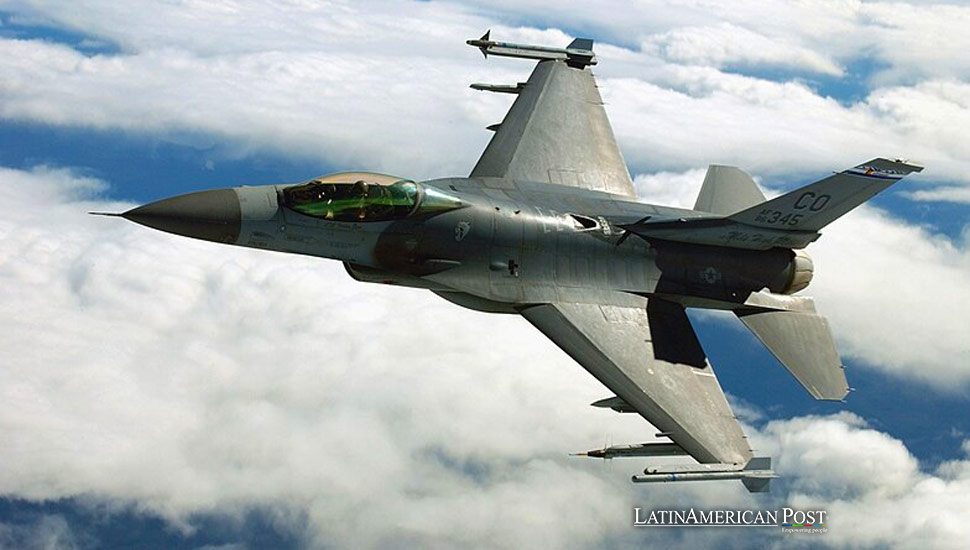Argentina Upgrades Air Force with Danish F-16 Fighter Jets

Argentina’s Defense Ministry has secured a $300 million deal to acquire 24 aging yet technologically refreshed F-16 fighter jets from Denmark, marking a significant update to its air defense capabilities amid regional modernization trends.
In a strategic move to bolster its aerial defense capabilities, Argentina has inked a deal worth approximately 2.1 billion kroner ($300 million) to purchase 24 F-16 fighter jets from Denmark. This acquisition upgrades Argentina’s military assets and integrates them into the global community of F-16 operators.
The deal, finalized on Tuesday at a Danish Air Force base, comes as Denmark transitions its fleet to the more advanced F-35A fighters. It expects to phase out its F-16s by the end of 2025. The Danish Defense Minister, Troels Lund Poulsen, highlighted that the F-16s have been “thoroughly maintained and technologically updated,” ensuring they remain relevant in contemporary combat scenarios.
Technological Comparison and Updates
The F-16 Fighting Falcon, developed by General Dynamics in the 1970s, has been a workhorse for air forces worldwide. Its design focuses on maneuverability and air combat superiority. Over the decades, the F-16 has undergone numerous upgrades to enhance its avionics, weapons systems, and radar capabilities to stay competitive with newer aircraft.
Compared to the state-of-the-art F-35A Joint Strike Fighter, the F-16 is generally considered less stealthy and technologically advanced. However, the F-35A excels with its stealth capabilities, advanced sensor packages, and network-enabled operations. Despite these advancements, the updated F-16s retain significant tactical value through upgrades such as modern radar systems, precision-guided weaponry, and improved electronic warfare suites.
Strategic Significance for Argentina
This acquisition marks a critical modernization step for Argentina, replacing older aircraft that are increasingly seen as obsolete against modern threats. Due to budgetary constraints and political factors, the Argentine Air Force has faced challenges in updating its fleet. By acquiring the F-16s, Argentina enhances its defensive posture and ensures interoperability with NATO-standard systems, an important aspect given the diverse range of missions the Air Force undertakes.
Integrating F-16 jets into Argentina’s fleet also has broader regional implications. Latin America has seen varied levels of air force modernization, with countries like Chile and Brazil incorporating more advanced jets like the F/A-18 and Gripen, respectively. Argentina’s move to adopt the F-16 aligns it more closely with current air combat trends in the region, potentially shifting the balance of aerial capabilities among South American nations.
Regional Context and Future Implications
Argentina’s acquisition of F-16s occurs in a context where many Latin American countries are reassessing their military needs. Nations are increasingly focusing on revamping their air fleets to address traditional defense roles and new challenges such as drug trafficking, territorial defense, and international peacekeeping responsibilities.
Moreover, this deal underscores a growing trend of Latin American countries engaging in the global defense market to update their military equipment. By choosing well-maintained second-hand jets like Denmark’s F-16s, Argentina pursues a cost-effective strategy to maintain relevance in a fast-evolving military technology landscape.
As Argentina anticipates the arrival of these jets in the coming years, the strategic foresight behind this purchase is clear. It reflects a calculated enhancement of the nation’s military capabilities, ensuring that the Argentine Air Force remains robust and responsive to national security needs and international cooperation demands.
Also read: Argentina’s Economic Resilience: Steering Toward Stability Amidst Historic Challenges
While the F-16s are not the newest planes on the market, their integration into Argentina’s defense arsenal represents a significant step forward in military capability and regional security posture. This move modernizes Argentina’s aerial capabilities and signifies its active participation in a global network of nations prioritizing robust defense and technological advancement.





